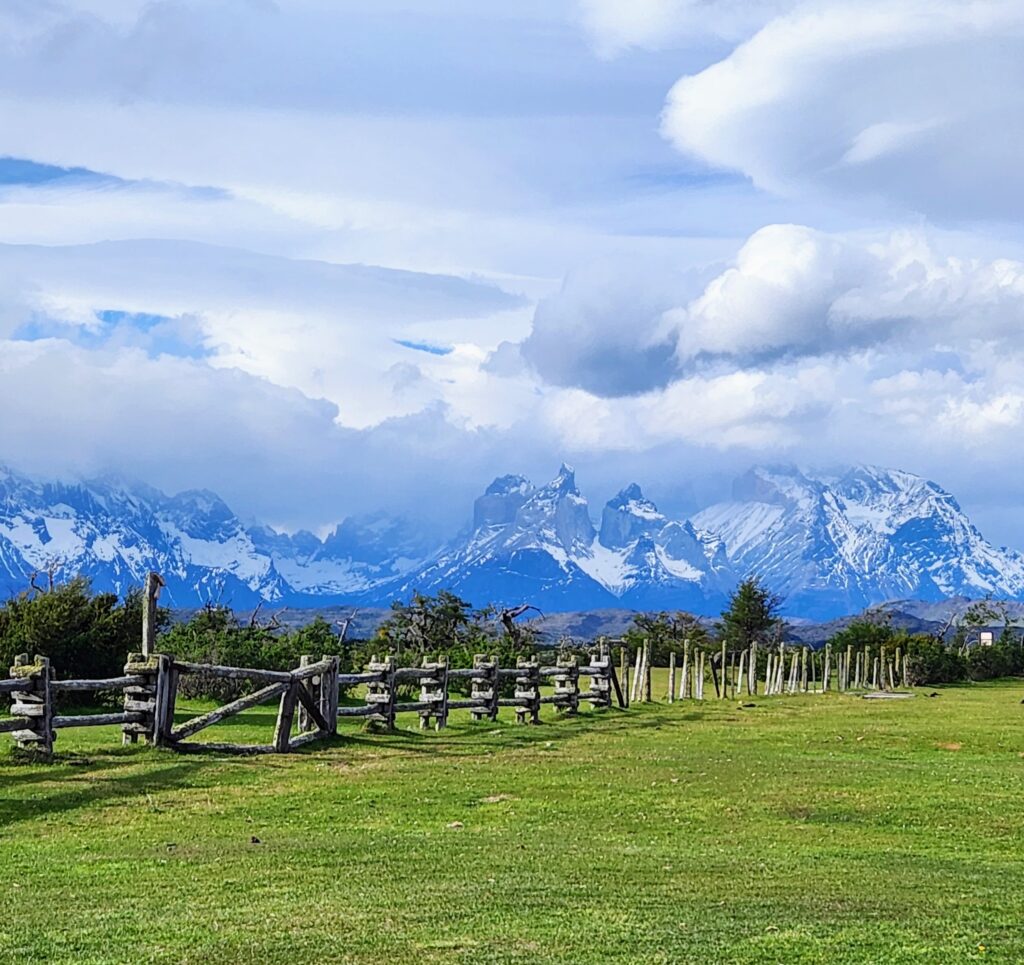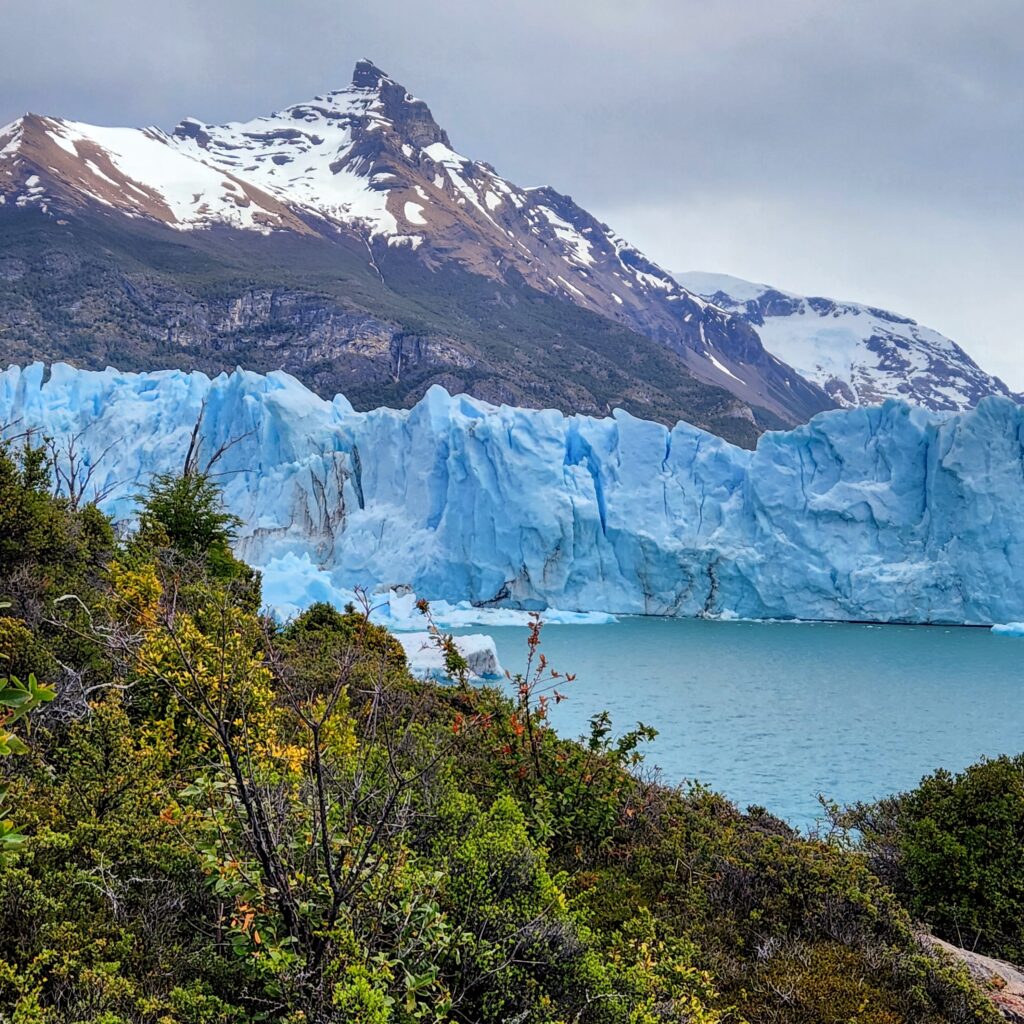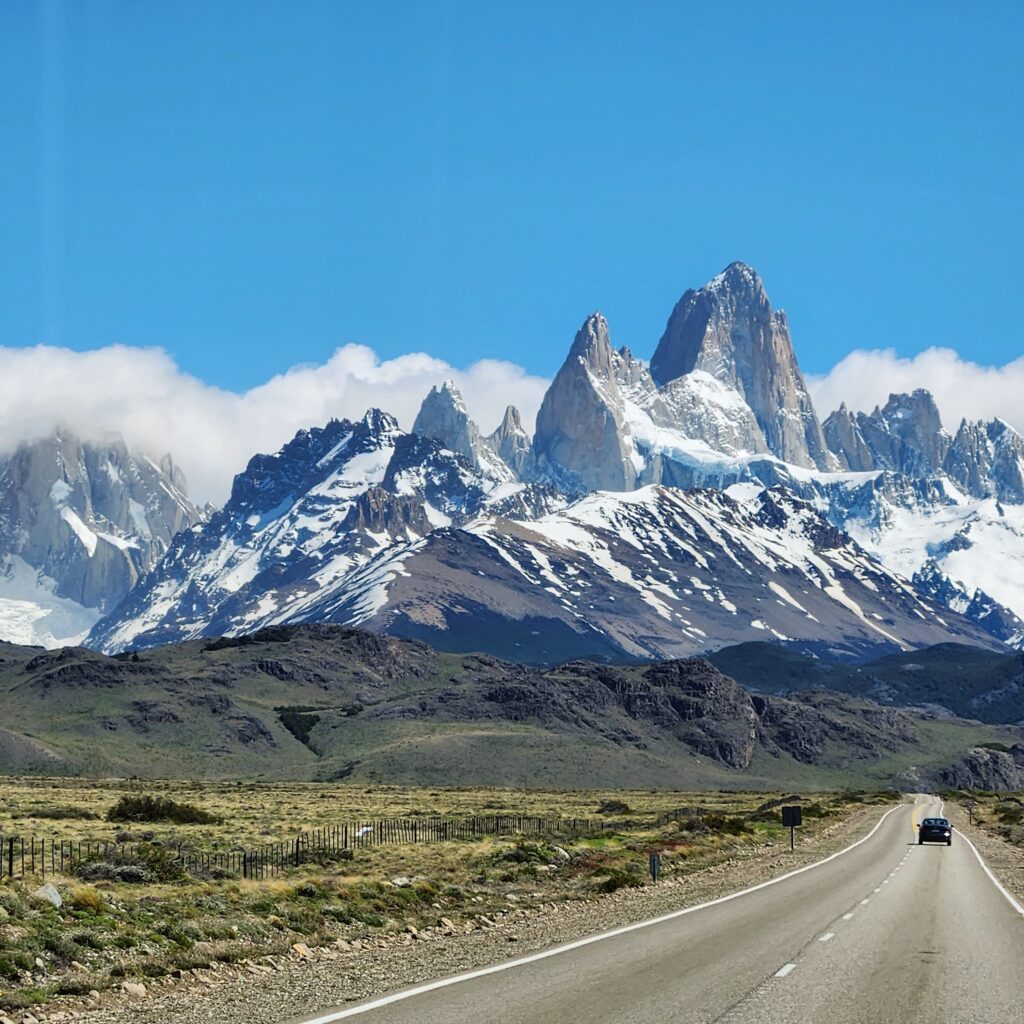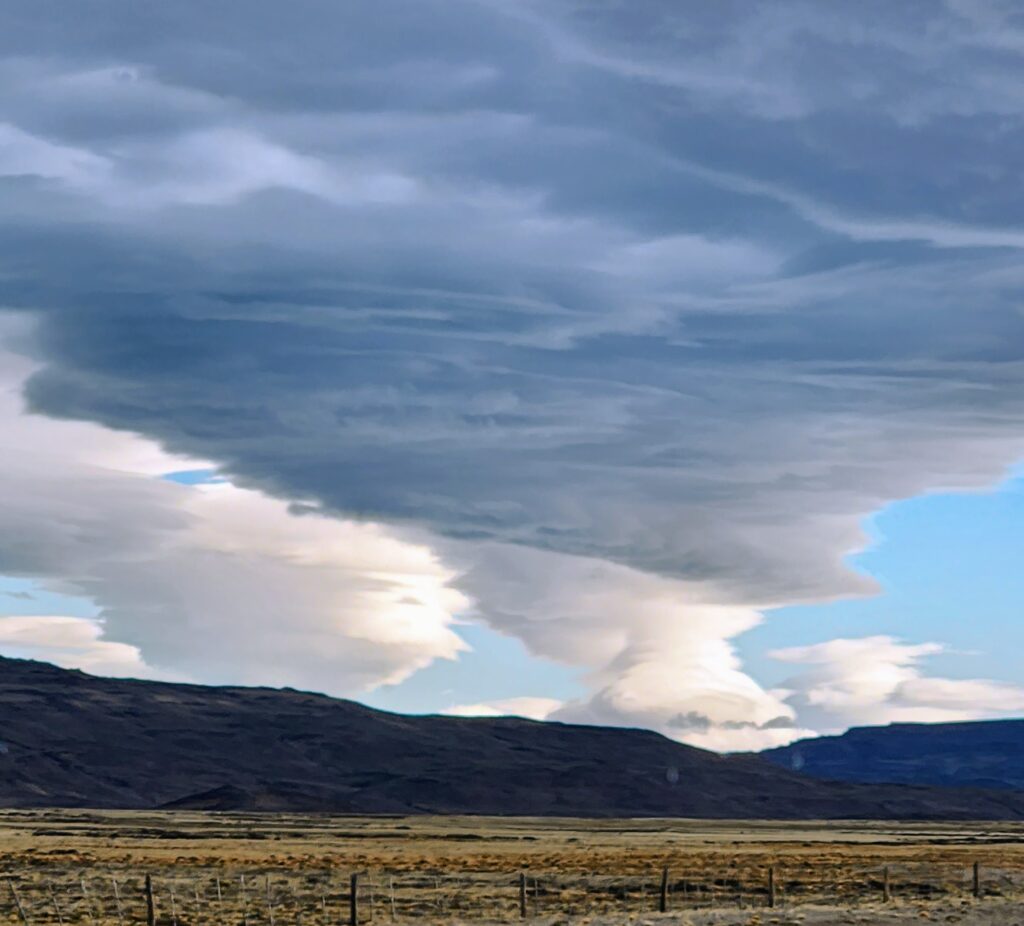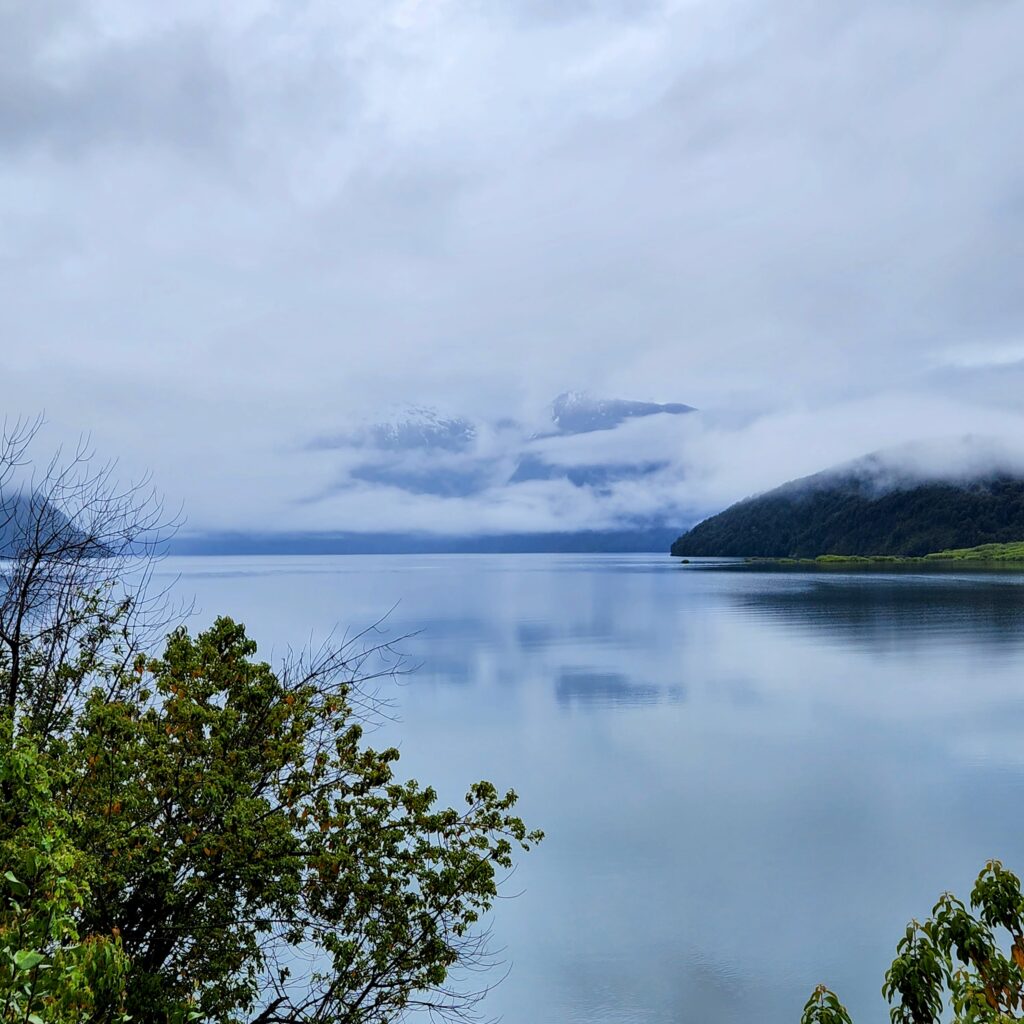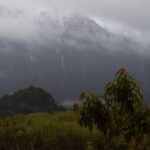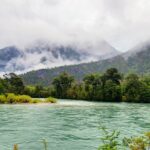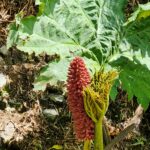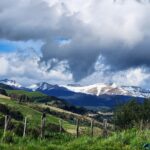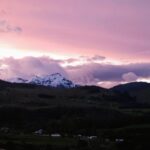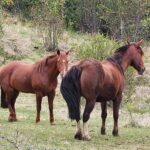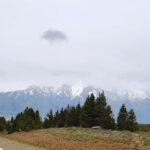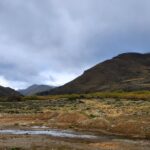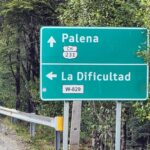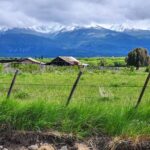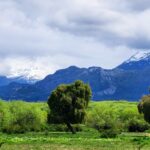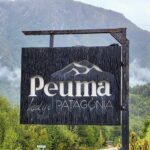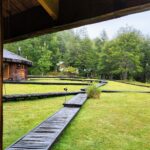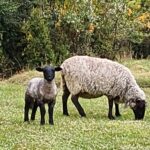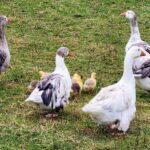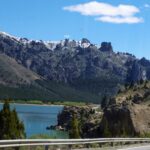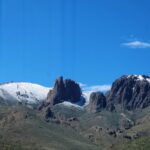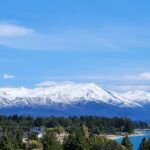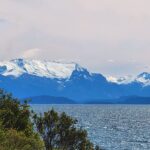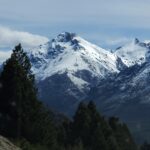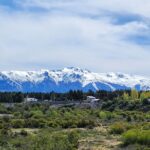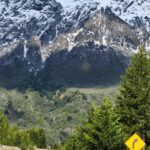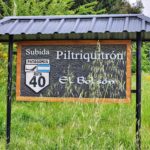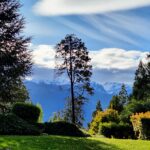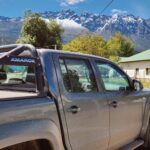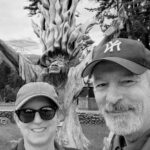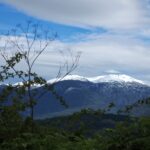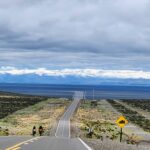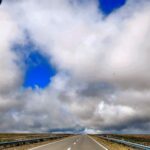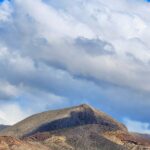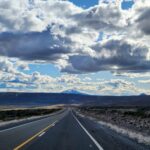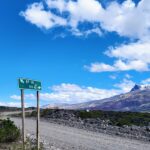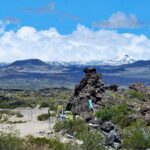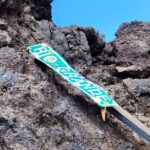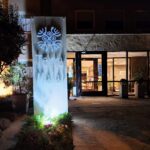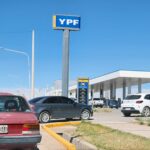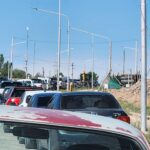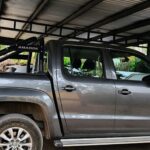Nov 10, El Chalten to El Calefate
We left the wooded cabin at about 9:30 a.m. in extremely windy conditions (people bracing against the wind walking in town) but not cold—16 degrees and sunny with fast-moving clouds. We tracked back SE along Lake Viedma, along route 23 away from Fitz Roy. The cloud cover only increased as we drove.
As we turned onto 40 south, we had about 90 additional kilometers of tremendous views of the mountains and glaciers in front of us and Fitz Roy to the north. Then as we rounded the tip of Lake Viedma heading south, the more desolate terrain returned including enormous mesas and the muted maroon and brown, barren brown hills with stubby grass all around. The temperature began rising to 20 degrees, quite balmy for the glaciers! Finally, we started downhill until the enormous Lake Argentino appeared on the horizon, and then we had 3.5 hours with views of dozens of white mountain peaks on the far side of the lake.
After finding our small, modern bed and breakfast, Casa Chica, we dropped our bags around 1:00 p.m. and headed for the Glacier National Park. With a boat tour of five glaciers (including Perito Moreno) scheduled for the following day and a forecast of pouring rain, we determined that our chance to see Perito Moreno Glacier in decent weather was now. After a 90-minute drive to and through the wooded park, we arrived with more clouds than blue sky, but no rain.
There are no words to describe it, Perito Moreno. You have to see it!
After our afternoon excursion walking the catwalks and viewing the glacier, we went into town (5 minutes by car) to look around and find a place to eat. We found a traditional place called La Cocina with homemade pasta. Returned to the Airbnb to find that they were setting up for what appeared to be a rodeo across the street! Had a good night’s sleep and woke up really early for our scheduled Glacier Boat Tour.
Nov. 11, Glacier Boar Tour
We had rain and sleet, with 30 mph winds and 5 degrees Celsius. The boat tour of the glaciers was scheduled to leave anyway at 8:30 as we received the meeting point location via WhatsApp, a 40-minute drive to the port, where a few of the numerous catamarans conduct tours constantly. We found a seat in front on the top deck, comfortable but not much to see due to the weather (horrible for views during the rain but turned out to be perfect later). We sailed for a few hours to the first glacier, Spegazzini, and on the way stopped for a photo-op with an enormous iceberg, at least as big as several city busses in the middle of a lake. Startling how blue, and solid, and permanent-seeming islands these icebergs are (although not so, because they continue to drift down Lake Argentino and shrink in size). Then, a bit later, the crew ‘fished’ a huge chunk of glacier-ice for people to take photos. We declined but later had a drink with ice cubes of the same ice!
By 11a.m., the rain had stopped, and the skies began to open somewhat as we approached the first glacier. The rest of the day we sailed to several more as well as numerous, gigantic, crystal blue icebergs. Again, I refer you to the photos. It is an experience one cannot describe. By 12:30, we had sun and as they served lunch and we approached Perito Moreno, the glacier we had visited on the catwalks the day before, the clearing continued with low puffy clouds hiding the peaks and the water turning a deeper turquoise.
The history of Perito Moreno is that Moreno was an explorer and an expert in frontier, and boundary drawing, and he planted a flag on what is now called Point Flag, or Punta Bandera, the spot from where we embarked; it was a location behind a peninsula out of the site of the glacier completely. He did not name the glacier; it was named for him because he was later a central figure in helping to resolve the border issue with Chile at the time, in the late 1800s. “Perito” means expert, and so, he was the “Expert Moreno.” The limits/borders were a problem in the south between these two nations, and so the English Crown mediated with the experts from both sides, importantly, including Moreno. Ultimately, it was decided, that if a river or tributary was flowing west, it indicated Chilean property; if it was flowing east, it was Argentine terrain. Ultimately, the Argentines ended up with less land but, they recognized, tremendous sites and now a parkland and glacier named for him.
Other important facts that may be of interest: Glaciers travel about 2 meters per day, which ensures that you are likely to see calving at some point when viewing a glacier such as Perito Moreno. We see around 30% of Perito Moreno above water (only 50-70 meters or so), and the other 70% of the ice is below the surface all the way to the bottom of the lake. And with icebergs, only 10% is above water as they float. Also, Perito Moreno is the size of Buenos Aires, Spagezzini is twice as tall as Perito Moreno, and Upsala three times as wide. The more famous glacier, Perito Moreno, is more stable and “in balance” than others, and it has stayed the same for a long time, meaning it is actually not losing ice, although the rangers said they are watching to see how things progress. Also, Perito Moreno remains the most accessible in the world and is known for its process of glaciation, which is complicated and fascinating, but too long to go into here. Suffice it to say, of the glaciers we saw, two, Spegezzini and Perito Moreno are considered somewhat “in equilibrium” but the others, including Upsala, are much less stable.
We arrived at the hotel,… to the rodeo! It appeared to be a local qualification round of bronco riding with a continuous narration; it was non-stop…the announcer was calling the rides, singing, telling jokes, etc. We heard it all, loud and clear while showering before dinner, but they had wrapped up by the time we were ready to go to bed.
FOR THE PHOTO/VIDEO DUMP OF EL CHALTEN TO EL CALEFATE, CLICK HERE:
https://photos.app.goo.gl/TqkZrZc7DMgRMczs6
Casa Chica: adequate, small rooms, but very clean and moderately comfortable. Proprietess is lovely. Includes a basic breakfast even very early in the morning.

